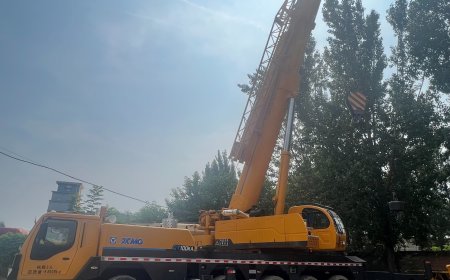What Are the Biggest Mistakes to Avoid When Learning How to Launch a New Product on Amazon?
Launching a product on Amazon has become one of the most lucrative ways to start an e-commerce business. However, navigating this dynamic and competitive marketplace isn’t easy—especially for beginners. If you’re just starting to explore how to launch a new product on Amazon, it’s critical to avoid the common pitfalls that derail many hopeful sellers.

Launching a product on Amazon has become one of the most lucrative ways to start an e-commerce business. However, navigating this dynamic and competitive marketplace isnt easy, especially for beginners. If youre just starting to explore how to launch a new product on Amazon, its critical to avoid the common pitfalls that derail many hopeful sellers. Without a clear strategy, thoughtful planning, and attention to detail, even the most innovative product can fail to gain traction.
This article explores the 10 biggest mistakes entrepreneurs and businesses make when launching a product on Amazonand how to avoid them to ensure your journey leads to growth and profitability.
1. Skipping Product Research and Validation
One of the most damaging mistakes new sellers make is launching a product without doing proper research. Just because a product looks trendy or performs well for someone else doesnt mean its the right fit for your business. Product research tools like Jungle Scout, Helium 10, and AMZScout exist for a reasonthey help you identify demand, analyze competitors, and predict profitability.
Skipping validation could mean entering a saturated niche, dealing with slim profit margins, or creating a product people arent looking for. Always let data, not emotion, guide your decision-making when choosing what to sell.
2. Choosing the Wrong Supplier
A successful Amazon product launch depends heavily on the quality, reliability, and consistency of your supplier. Many beginners make the mistake of picking the cheapest option on Alibaba or sourcing without conducting a proper factory audit. Poor communication, substandard materials, and delayed production timelines can ruin your brands credibility before it even starts.
Instead, build relationships with suppliers that have a proven track record, offer product samples, and are transparent with certifications, timelines, and pricing. A reliable supplier ensures you launch with confidence.
3. Underestimating the Importance of Branding
Too often, new sellers treat Amazon like a flea marketfocusing on low prices rather than creating a recognizable brand. But Amazon is evolving into a brand-driven marketplace. If your product doesnt have a unique look, story, or personality, it will get lost among the thousands of similar listings.
From your logo to your packaging to your product inserts, branding builds trust, tells a story, and increases perceived value. Strong branding is a long-term investment that encourages customer loyalty and repeat purchases.
4. Creating a Poor Product Listing
Your product listing is your storefront on Amazon, and it must do the job of both attracting and converting customers. Many sellers rush through this stage, resulting in listings that are vague, unprofessional, or keyword-stuffed without providing real value to the customer.
A high-quality listing includes:
-
A compelling, keyword-optimized title
-
Bullet points that highlight features and benefits
-
A clear, informative product description
-
High-resolution images that show the product in use
Remember, your listing doesnt just informit persuades. Invest time (or hire experts) to make it count.
5. Ignoring Amazons Terms of Service

Amazon is strict with its rules, and violating its Terms of Service (TOS) can lead to account suspension or listing removal. Many sellersespecially first-timersget penalized for seemingly innocent mistakes like asking for reviews in exchange for discounts or manipulating keywords in hidden ways.
Always stay updated with Amazons current seller guidelines. Dont use black-hat tactics to gain traction fast. Building your account the right way sets you up for long-term success.
6. Launching Without a Review Strategy
Social proof is everything on Amazon. Without customer reviews, your product will struggle to gain momentumeven if it's great. One of the biggest mistakes sellers make is failing to implement a review strategy early on.
Amazon now allows legitimate ways to collect reviews, such as:
-
Follow-up email sequences
-
Using the Amazon Request a Review button
-
Enrolling in Amazon Vine (for brand-registered sellers)
You should never pay for fake reviews or violate guidelines, but you should take ethical, proactive steps to encourage genuine feedback.
7. Neglecting Amazon PPC and Advertising
Many sellers think that launching a product is a "build it and they will come" situation. In reality, advertising is essential to gaining visibilityespecially in the early stages. Ignoring Amazon Pay-Per-Click (PPC) ads or underestimating their value is a big mistake.
A smart ad strategy helps drive initial traffic, improve keyword rankings, and test which phrases convert best. You dont need a massive budgetbut you do need a plan. Monitor and optimize your campaigns regularly for the best results.
8. Mismanaging Inventory
Running out of stock during your launch is a momentum killer. Amazons algorithm penalizes out-of-stock items, lowering their ranking and costing you valuable visibility. At the same time, over-ordering inventory can tie up your capital and increase storage fees.
Use demand forecasting tools to predict your launch needs. Keep communication open with your supplier and prepare for unexpected spikes in demand. Inventory management is a balanceand you need to monitor it constantly during launch season.
9. Failing to Optimize After Launch
Your product launch isnt a set it and forget it task. One of the most common mistakes new sellers make is failing to monitor performance metrics or test different listing elements after the product is live. Amazon rewards listings that evolve and improve.
Use A/B testing (through Amazon Experiments), optimize your backend keywords, test different pricing strategies, and adjust your images and bullet points based on customer feedback and data. Constant refinement helps you climb in rankings and improve conversions.
10. Not Seeking Professional Guidance When Needed
While it's tempting to do everything yourself, the Amazon landscape is complexand small errors can lead to big setbacks. One of the smartest things you can do is consult with professionals, especially for product design, launch strategy, and marketing execution.
Whether its hiring a coach, agency, or design expert, leveraging outside help can prevent costly mistakes, save time, and fast-track your success. You dont have to go it aloneand often, you shouldnt.
Conclusion

Learning how to launch a new product on Amazon can be one of the most exciting and profitable steps you take as an entrepreneur. But its also filled with potential missteps that can stall your growth or sink your investment. The good news? Most of these mistakes are entirely avoidable with the right planning, mindset, and tools.
By avoiding these top 10 pitfallspoor research, weak branding, unoptimized listings, ignoring PPC, and moreyoull dramatically increase your chances of success. Launching smart sets the foundation for long-term profitability and brand growth on the worlds most powerful marketplace.
And remember, your products success begins even before it's listed. A well-executed launch starts with great design, user experience, and product presentation. Thats why working with professional Amazon product design services can make all the difference. These experts help you develop, position, and present your product in a way that aligns with Amazons best practices and consumer expectationsgiving you a polished, conversion-ready product from day one.



























